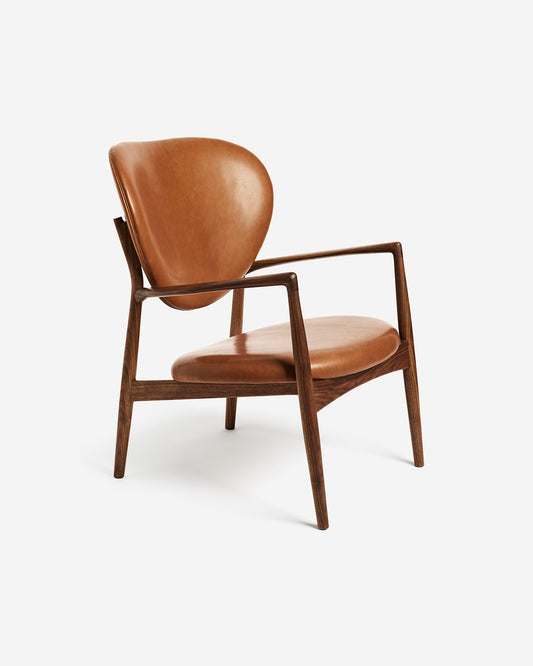Nils and Eva Koppel were a pioneering Danish architect couple whose work helped shape mid-20th century Scandinavian architecture and design.
Best known for their contributions to the post-war modernist movement, the Koppels’ practice evolved into one of Denmark’s most prominent architectural firms, achieving renown for a portfolio of public building designs and residential projects, and winning numerous awards along the way.

Nils and Eva Koppel at their KKE studio.
Nils and Eva met in 1935 while studying at the Danish Polytechnic Teaching Institute, where Eva was enrolled in mathematics and Nils in engineering. Later that year, they both joined the Royal Danish Academy of Fine Arts’ School of Architecture, and the pair married in 1936, just a year after their first meeting. Their collaboration, both personal and professional, would come to define Danish architectural development for the next 50 years.
Nils Koppel came from a distinguished family. His father, Valdemar, was a noted journalist and editor-in-chief at the newspaper Politiken, and his mother, Elise, worked as a translator. His younger brother, Henning Koppel, became one of Denmark’s most acclaimed product designers and a talented silversmith.
Working with Alvar Aalto and Fleeing to Sweden
In the late 1930s, Nils and Eva joined the studio of the pre-eminent Finnish architect Alvar Aalto, whose organic modernist ethos profoundly influenced their approach. They would continue to collaborate with Aalto while working at the architecture firm of Albin Stark in Sweden during the 1940s.
Despite their professional successes, the tumult caused by the growing Nazi expansion in Europe would directly impact the Koppel family. The Koppels were part of a broader Danish Jewish community that fled Nazi persecution in 1943. Along with their young daughter, Nils, Eva, and their extended family, including Nils’s parents Elise and Valdemar, and his brother Henning, fled to Sweden. Nils’s father, Valdemar, was initially captured by the Nazis but managed to join the family shortly thereafter. That same year, Nils had been arrested in Denmark and was briefly imprisoned. His friend and mentor Alvar Aalto was called upon to intervene, personally calling on the Nazis’ chief architect, Albert Speer, to help secure his release.
Return to Denmark and Establishing Their Own Practice
Following the war, Nils and Eva returned to Denmark and founded their own studio in 1946. Their early commissions primarily consisted of single-family homes characterised by restrained, modern forms. Among these were Henning Koppel’s house in Birkerød and their own residence in Gentofte, both built in 1946. The Gentofte house is now listed for its architectural significance.
The Koppels' architectural breakthrough came in 1957 with their celebrated design for the Langelinie Pavilion in Copenhagen, a bold and elegant example of modernist public architecture. That same year, Nils was appointed Royal Building Inspector - a prestigious role that enabled their growing firm to secure large-scale public commissions. Over the following decades, the Koppels became particularly known for institutional and educational architecture. Their major works include the Hans Christian Ørsted Institute, Copenhagen (1955–1962); the Technical University of Denmark (DTU), Lundtofte (1961–1975); the Panum Institute, Copenhagen (1966–1986); Copenhagen University Amager (KUA) (1972–1979); and the restoration of the Danish National Gallery (1966–1970). These buildings were marked by rational layouts, durable materials and monumental forms, and epitomise the influence of Brutalism, which took root in Denmark during the 1950s and '60s.

An early portrait of Nils and Eva Koppel on-site at a building project.
In 1968, the Koppels expanded their practice from KK (Koppel-Koppel) to include architects Gert Edstrand and Poul Erik Thyrring, forming KKET (Koppel-Koppel-Edstrand-Thyrring). In 1979, with Thyrring leaving the firm, the business became KKE (Koppel-Koppel-Edstrand), and they continued to develop projects together until 1986. The work achieved during these years saw KKE recognised as one of Denmark’s largest and most respected architectural offices, known for its ambitious scope and technical rigour.
A Pivot into Furniture Design
Like many architects of the time, the Koppels designed furniture, lighting, and even wallpaper to furnish and decorate their projects. Their Model 781 easy chair - featuring organic shapes, wooden framing and brightly upholstered surfaces - remains an enduring example of Scandinavian modernism.

Another famous furniture piece by Nils and Eva Koppel - The Butterfly Chair. Manufactured in the 1950s by Møbelfabrikken Norden.
However, the high point of their brief but remarkable furniture design career was the release of the Model 190 in 1952. First produced by the notable furniture manufacturer Slagelse Møbelværk, this sculptural piece was distinguished by its blade-like arms and flowing organic curves, and to this day remains a highly sought-after and collectible piece from the Danish Modern period.

An extract from a catalogue by furniture manufacturer Slaglese Møbelværk, featuring an early edition of the Model 190 chair.
 The new reissued version of the Model 190 chair, relaunched as the Medallion Chair in collaboration with the Koppel estate.
The new reissued version of the Model 190 chair, relaunched as the Medallion Chair in collaboration with the Koppel estate.
Throughout their careers, Nils and Eva received numerous awards and accolades. Among these were the Eckersberg Medal (1955), the Wood Prize (1960), and the Natural Stone Prize (1966). Nils also received the Knud V. Engelhardt Scholarship in 1951, and Eva served as vice-chairman of the board for the Design School for Women, underlining her commitment to design education and professional advocacy.
Nils and Eva Koppel’s legacy is woven into Denmark’s architectural fabric - not only through their buildings, but also through the quiet confidence of their design language: modern, democratic, and deeply rooted in the Scandinavian spirit.



